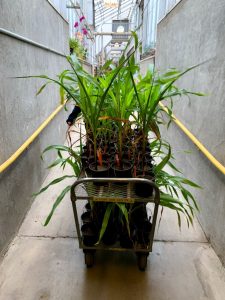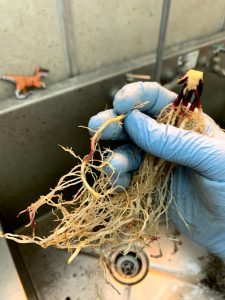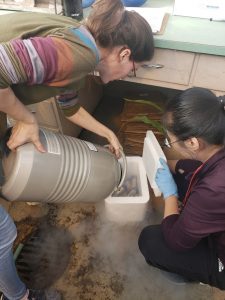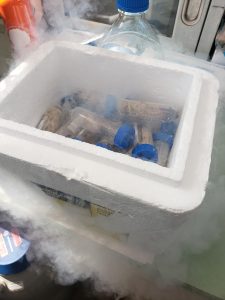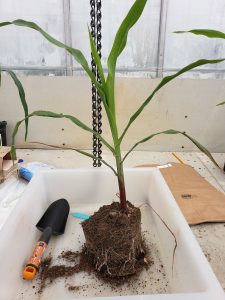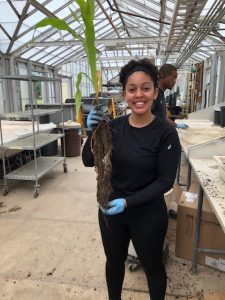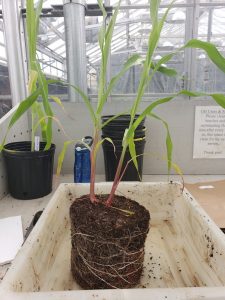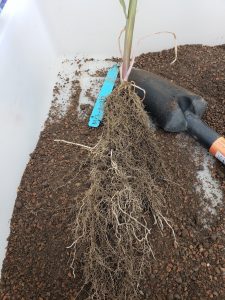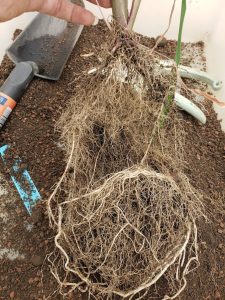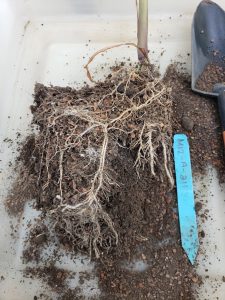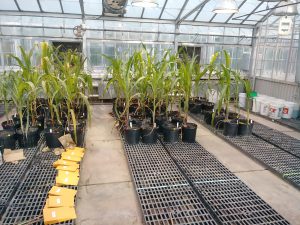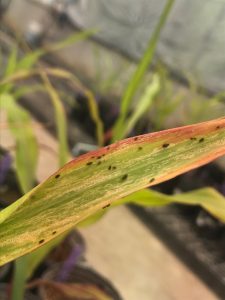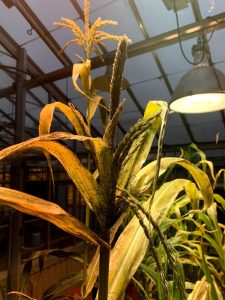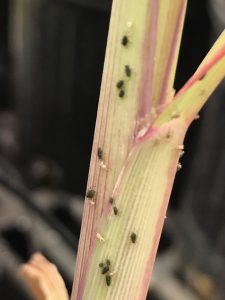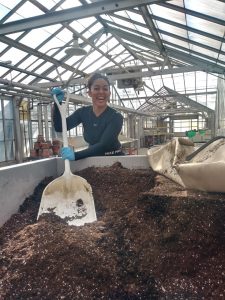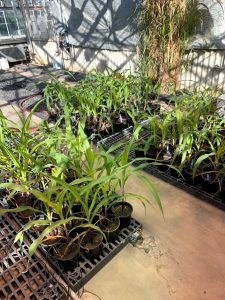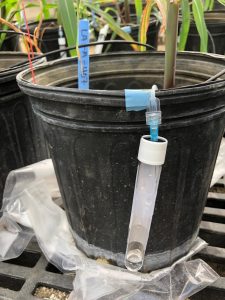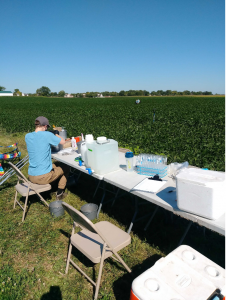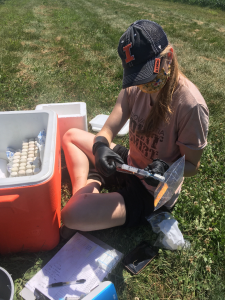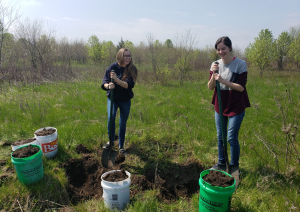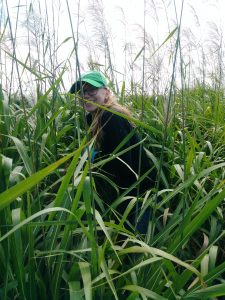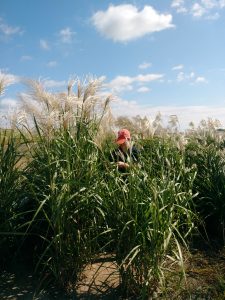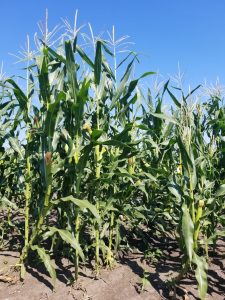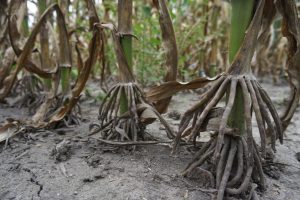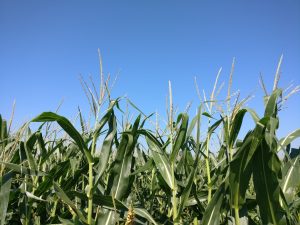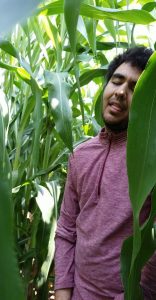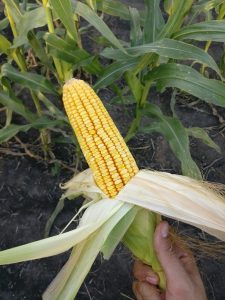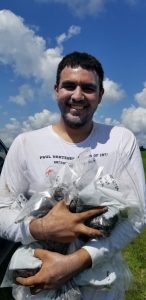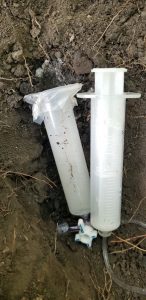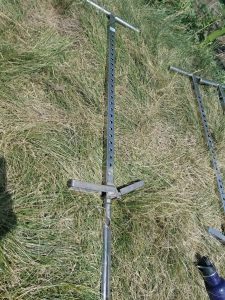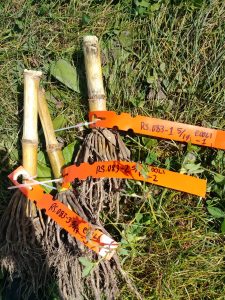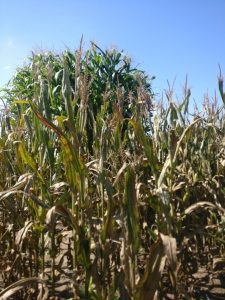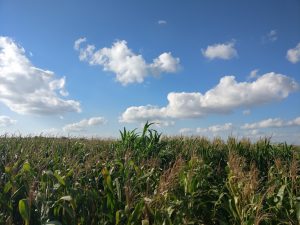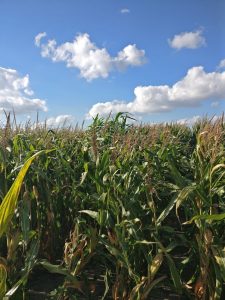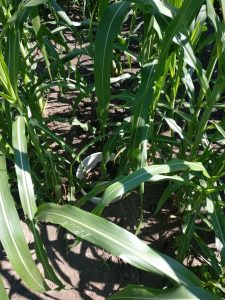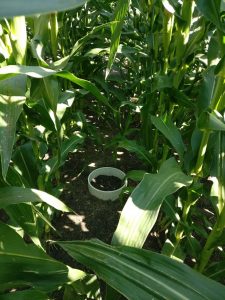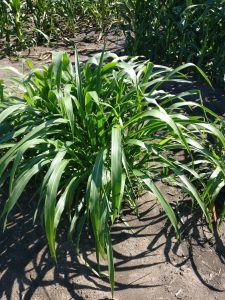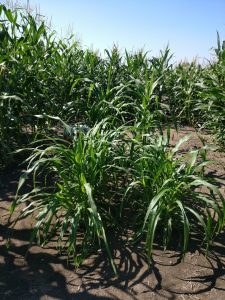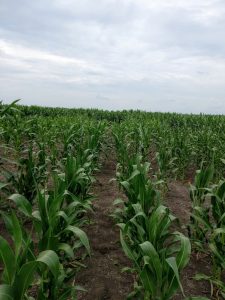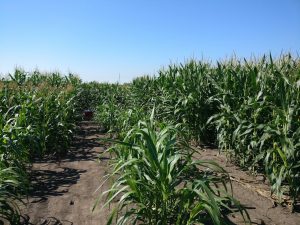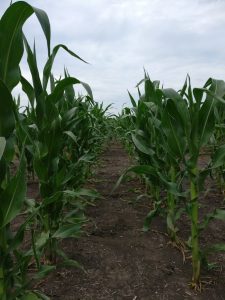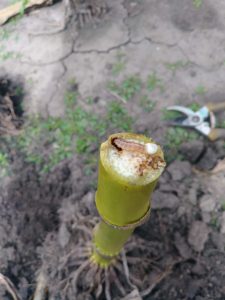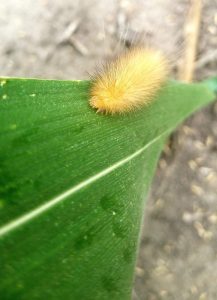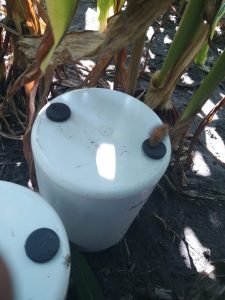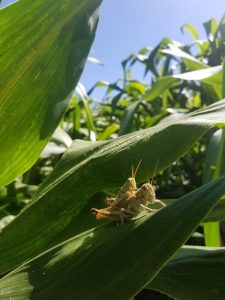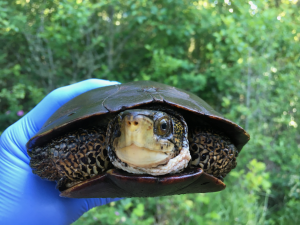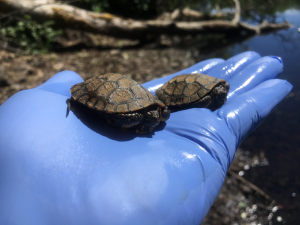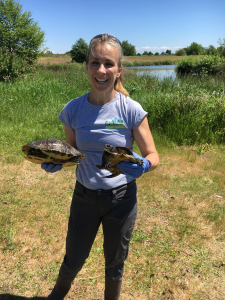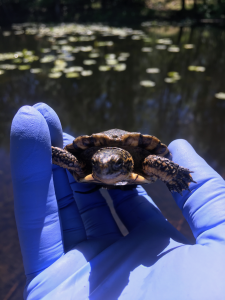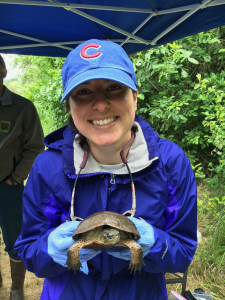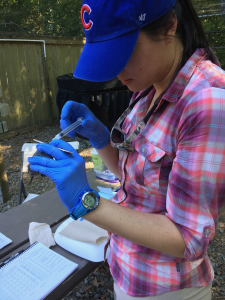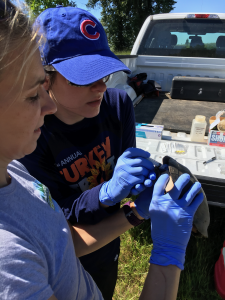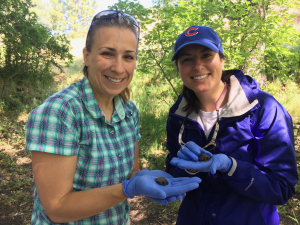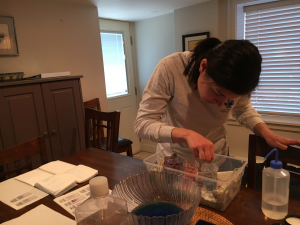Yang Lab vs Kent Lab Paintball – October 2023
Lab Assays and Field work 2022-2023
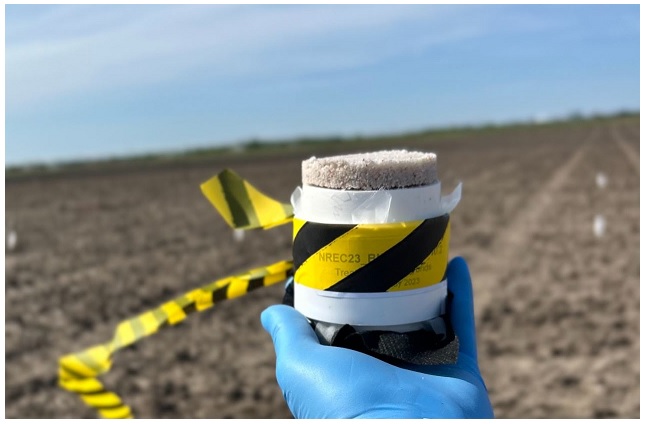
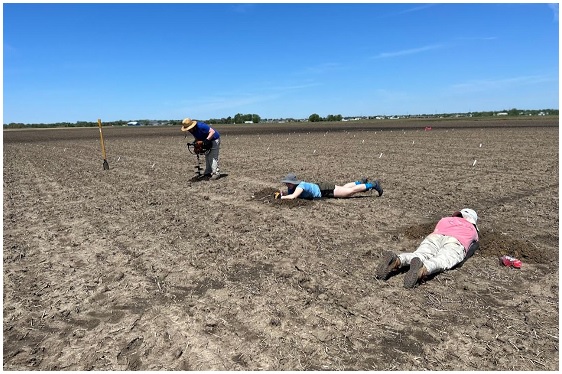
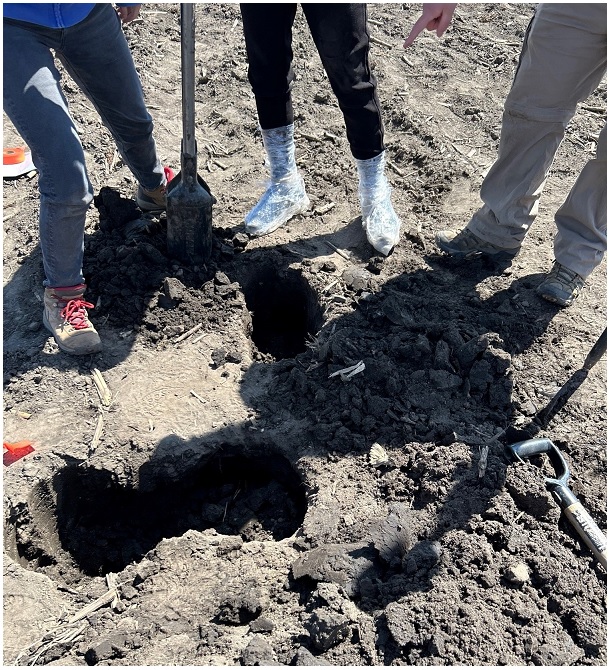
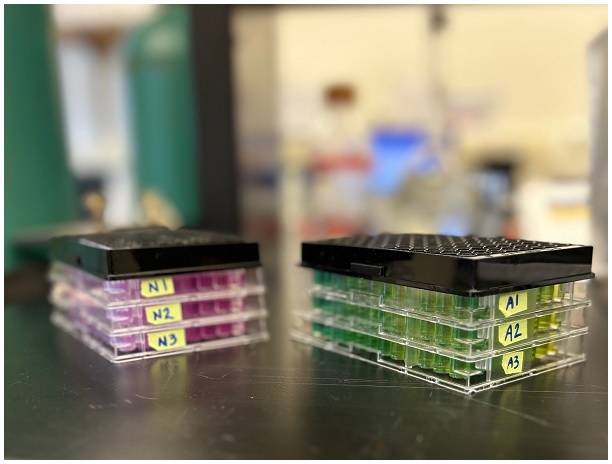
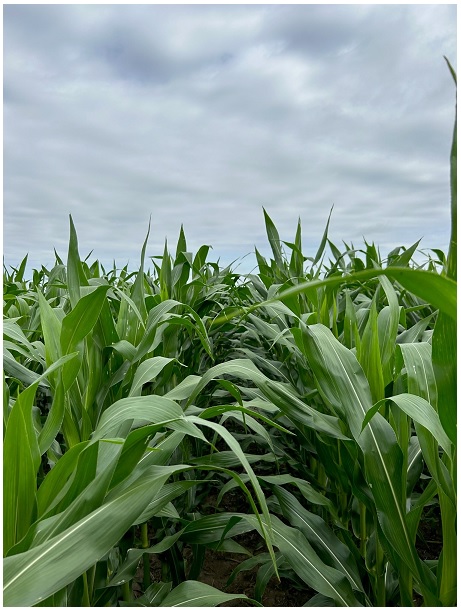
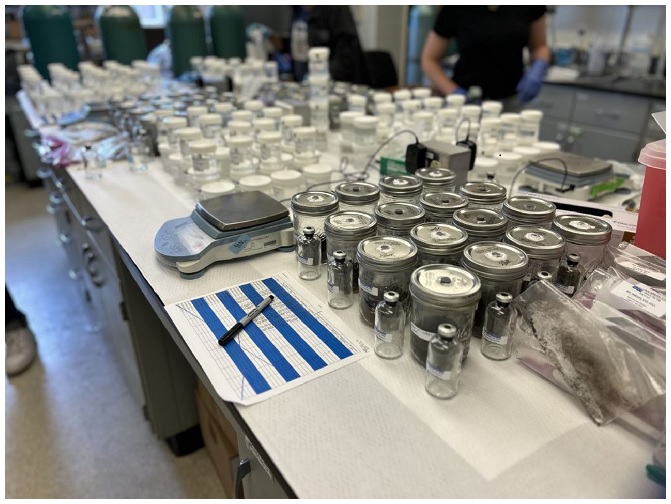
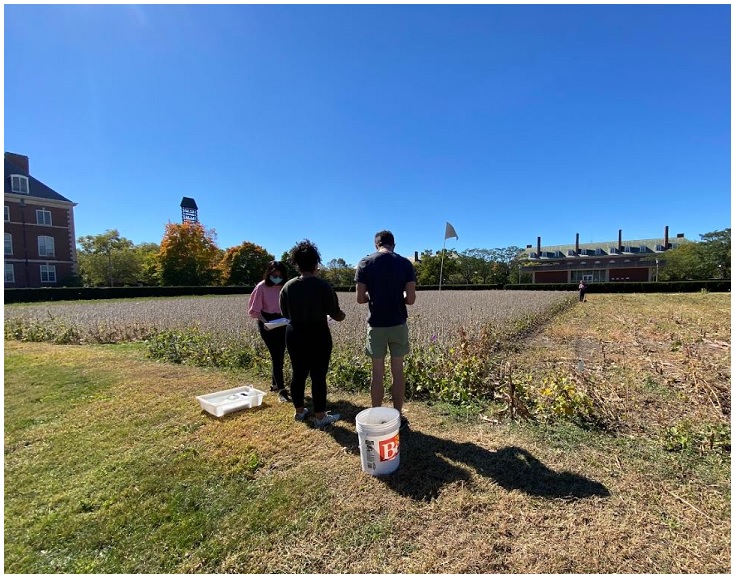
In the Lab
Turning our Backyard into Lab Space (May 2020)
For our greenhouse experiments, soil must be collected from a microbially rich site and sieved for homogenization. Shown here is how we’ve adjusted to sieving soil amidst COVID-19: we work in our own backyard! During the springtime, we sieved 14 buckets of soil for an upcoming greenhouse experiment designed by our postdoc, Niuniu Ji.
DNA extractions
On the left, Sierra is preparing a subset of her soil samples for high-throughput DNA extractions with our QIAcube QIAGEN HT robot. This machine spits out pipette tips as shown in the middle picture. On the right, Rachel and Kevin are manually extracting soil samples with a FastDNA Spin Kit for Soil extraction kit.
DNA Sequencing Preparation (November 2019 & December 2020)
Rachel preparing DNA extractions for Illumina sequencing, which helps us better understand and untangle the soil microbial community genome.
Denitrification Assay
Our former lab technician, Elle Lucadamo, preforming the acetylene and helium gas incubation step of the denitrification assay.
Nitrification Assay
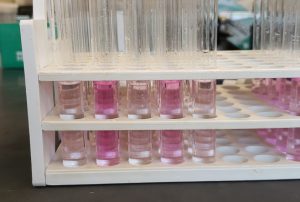
In the first photo, the colorimetric analysis step in our nitrification assay helps us visualize the content of nitrite in each of our soil samples. The darker absorbance resembles a higher content of nitrite, symbolizing a higher rate of potential nitrification. This is undesirable since this form of Nitrogen can be easily leached out of agricultural fields and into groundwater, potentially contributing to the Hypoxic Zone in the Gulf of Mexico. Also shown here is Sandy and Rachel prepping for the filtration step within our nitrification assay, while soil samples incubate and aerate on the shaker machine.
Halloween Costumes 2019
On Halloween, our lab technicians dressed up as common insects – Rachel as a bumblebee, and Sandy as a ladybug! Sierra chose to be a cow due to her previous experience as an undergrad working on a dairy farm.
Greenhouse Work
Planting Niuniu’s New Maize Experiment (June 2020)
On this day, four members of the same household (Rachel, Sierra, Kevin, and Sabine) helped postdoc Niuniu Ji mix and plant 150 pots of soil for her greenhouse experiment studying high and low protein lines in Maize. This was coordinated specifically to minimize the number of households present, keeping the risk of COVID-19 as low as possible.
Sampling Amidst COVID-19 (March 2020)
As university operations decline dramatically in the face of a pandemic, Niuniu, Sandy, and Rachel finish up the work that is necessary for the sampling of Niuniu’s Sorghum greenhouse experiment. By using proper PPE and maintaining as much distance as possible in the small root washing room, the hands-on part of this experiment was completed on this day.
Alonso’s Maize Experiment (March 2020)
Members of the lab (Sandy, Niuniu, and Rachel) helped Alonso with sampling his greenhouse experiment in the root-washing room of the Plant Sciences Greenhouse. After ridding the roots of soil, we froze each rhizosphere with liquid nitrogen so that we can perform metabolomic extractions in the future.
Rhizospheres!
Isolating the rhizosphere in the greenhouse is always a fun game of untangling the roots from the soil, in the most sterile way possible!
Niuniu’s Maize Sampling (January 2020)
On this day, we helped Niuniu collect root, leaf, and soil samples (rhizosphere and bulk) to assess the differences of nitrification and denitrification rates over maize genotypes with contrasting protein lines.
Creatures and Critters
Greenhouse bug infestations can be a real source of frustration, often causing inconsistent results among genotypes and across experiments. The middle picture shows a dramatic aphid infestation on one of the genotypes we often use for a control.
Miscellaneous
Left: Sierra digging out sterile, autoclaved greenhouse soil in preparation for Niuniu’s greenhouse experiment.
Middle: Alonso’s greenhouse experiment right before it was taken down for harvest.
Right: This setup shows our attempted methodology for the collection of root exudates within greenhouse pots.
Field Work
Nitrogen Fixation Assay on Soybean Nodules (August 2020)
Isaac Klimasmith and Rachel Waltermire coordinate with Dr. Below’s graduate students to preform a novel task in the Kent Lab: conducting the Nitrogen fixation assay, in the field, on Soybean root nodules by using an acetylene gas incubation period to then measure ethylene content back in the lab.
Soil Collection (May 2020)
Our greenhouse soils often require “live soils” – soils that we have collected (and sieved) that we know to be microbially rich, such as from a prairie. Soil collection becomes a frequent necessity for our lab when preparing for greenhouse experiments, so it’s a good idea to collect soil while it’s warm outside like Rachel and Sandy in this picture.
Miscanthus Sampling (September 2019)
Sandy and Rachel sampling across dozens of Miscanthus genotypes in the field. Rachel helped with taking soil cores across rhizosphere and bulk samples, while Sandy focused on taking SPAD (Soil Plant Analysis Development) measurements to have an estimation for chlorophyll content in the leaves.
Alonso’s Maize Experiments
This set of pictures is from Alonso’s 2018 field experiment which focused on finding differences in the microbial communities across various genotypes of maize (Zea mays) rhizospheres. Alonso selected genotypes which had been bred for decades and compared them against teosinte (Zea mexicana and Zea parviglumis), the wild ancestor of maize, to see how the rhizosphere microbial community has responded to selective breeding over time.
From top to bottom, we see flowering plants and the aerial roots of corn, and Alonso’s tired-but-positive attitude in the field. The next row shows our attempt at root exudate collection in the field, a soil core used for collecting soil samples, and washed rhizospheres with their appropriate labels. You can see in the next few pictures how hybrid genotypes tower over any counterparts with their lush green leaves. Also included are pictures of white plastic chambers that were installed in the field to measure the gaseous emission of nitrous oxide (N2O), a powerful greenhouse gas. The shorter, bushier plants shown in these pictures are teosinte – highlighting how much corn has changed over the years due to selective breeding practices.
Creatures and Critters
From left to right: Western corn rootworm (Diabrotica virgifera virgifera) larvae, Yellow woolly bear caterpillar (Spilosoma virginica), one of which is trying to measure gas fluxes in the field, and two mating Differential grasshoppers (Melanoplus differentialis) – all found within Alonso’s maize field!
Monique and Angela’s Trip to WA/OR for Data Collection
These pictures show Angela and Monique collecting DNA samples from turtle shell swabs along with water samples for microbial community analyses to ensure the health of the Western Pond Turtle (Actinemys marmorata) microbiome. Their field sites were in Washington and Oregon, and samples were collected mainly in the Summer of 2018.
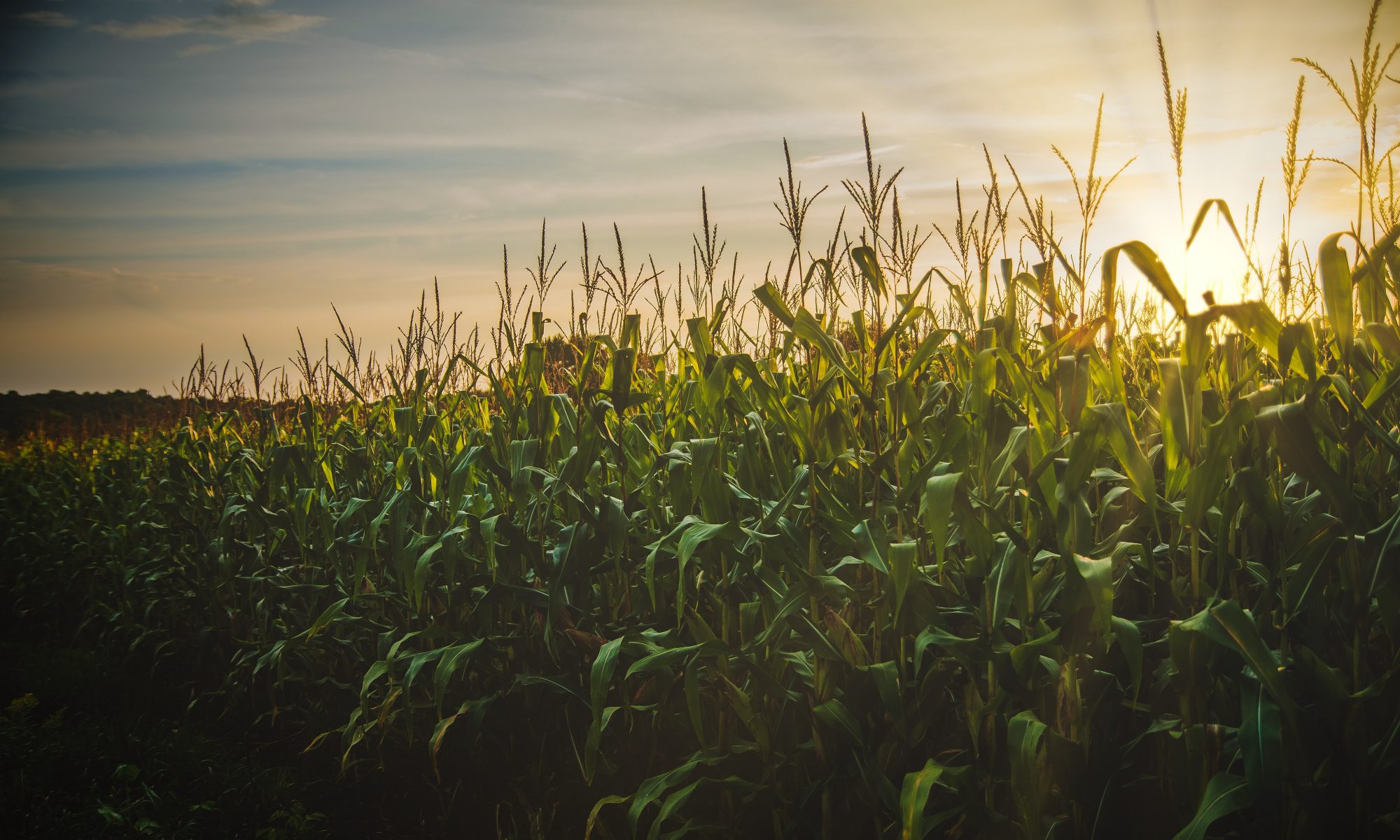
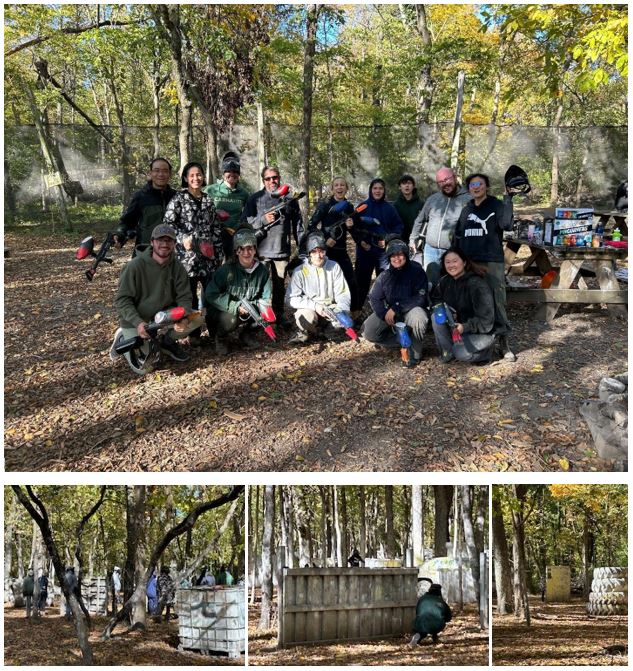
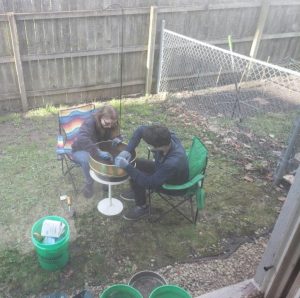
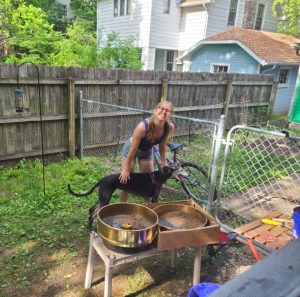
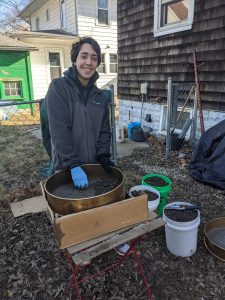
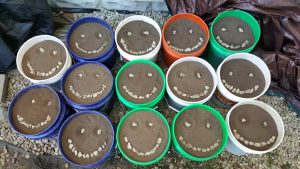
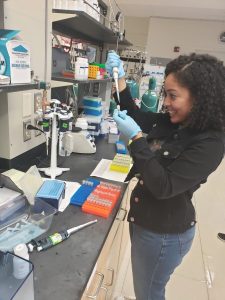
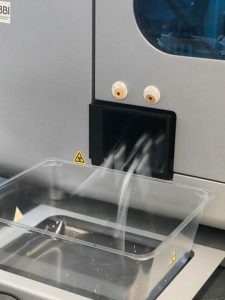
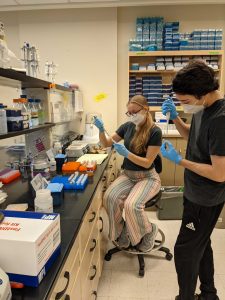
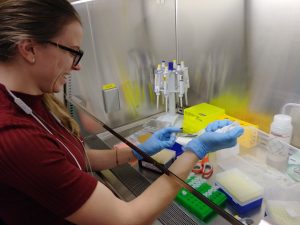
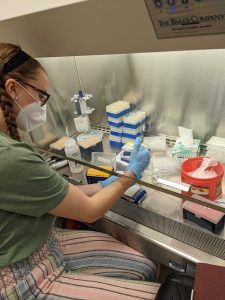
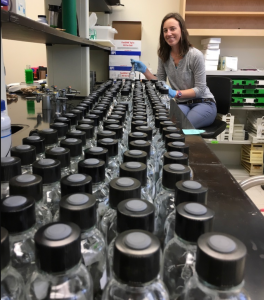
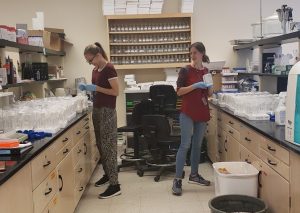
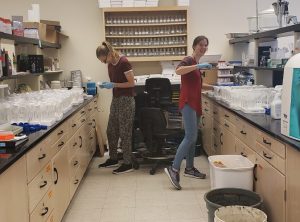
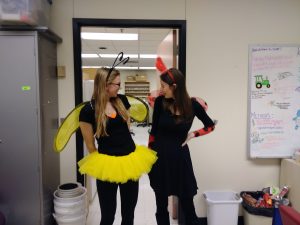
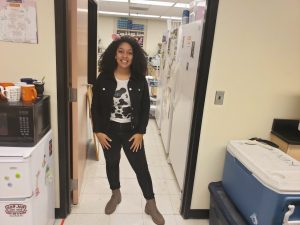
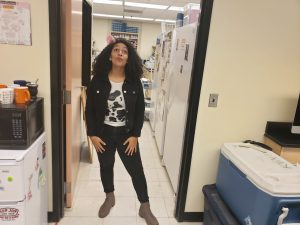

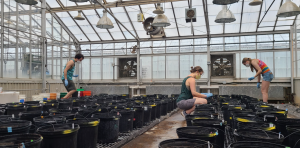
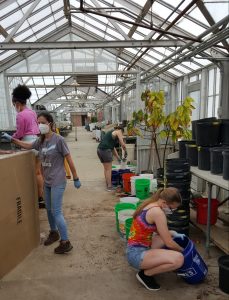
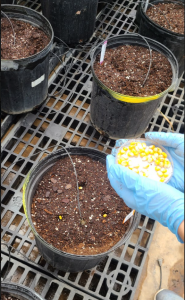
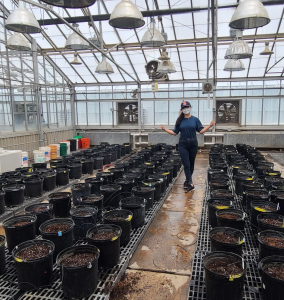
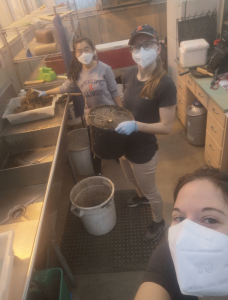
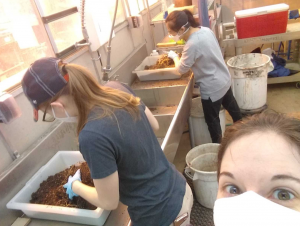
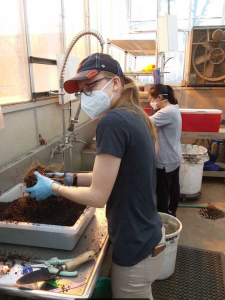 />
/>